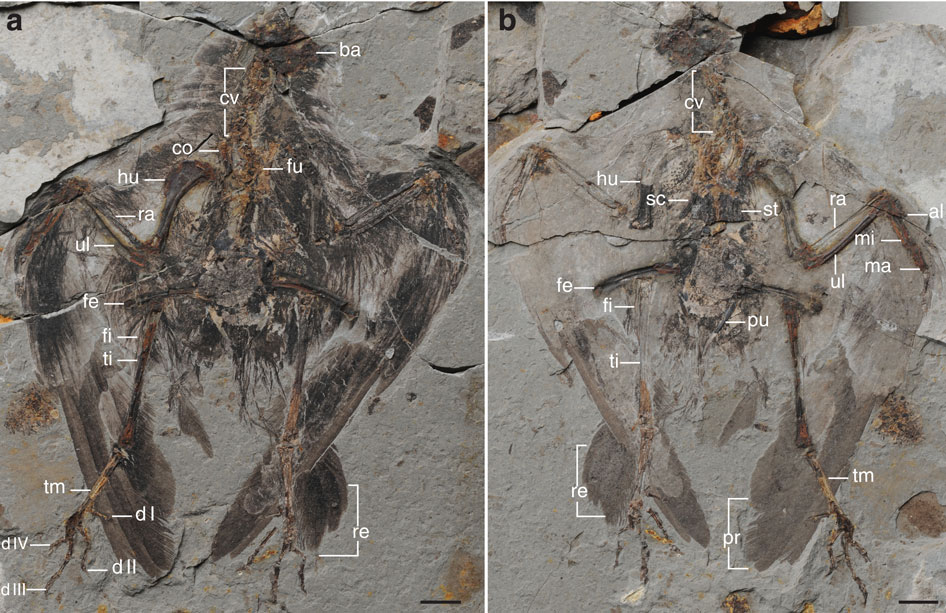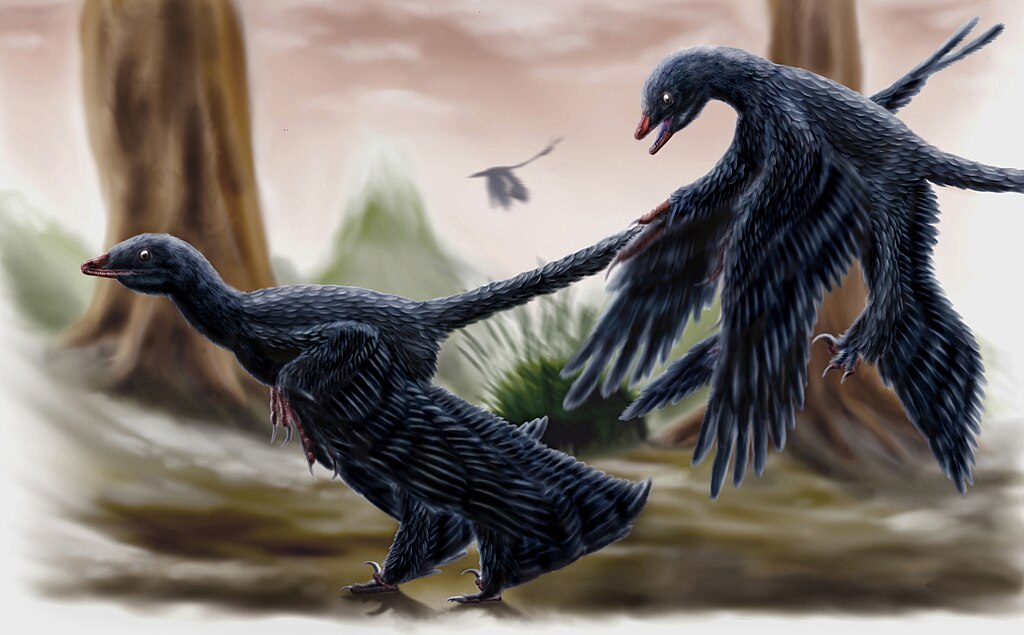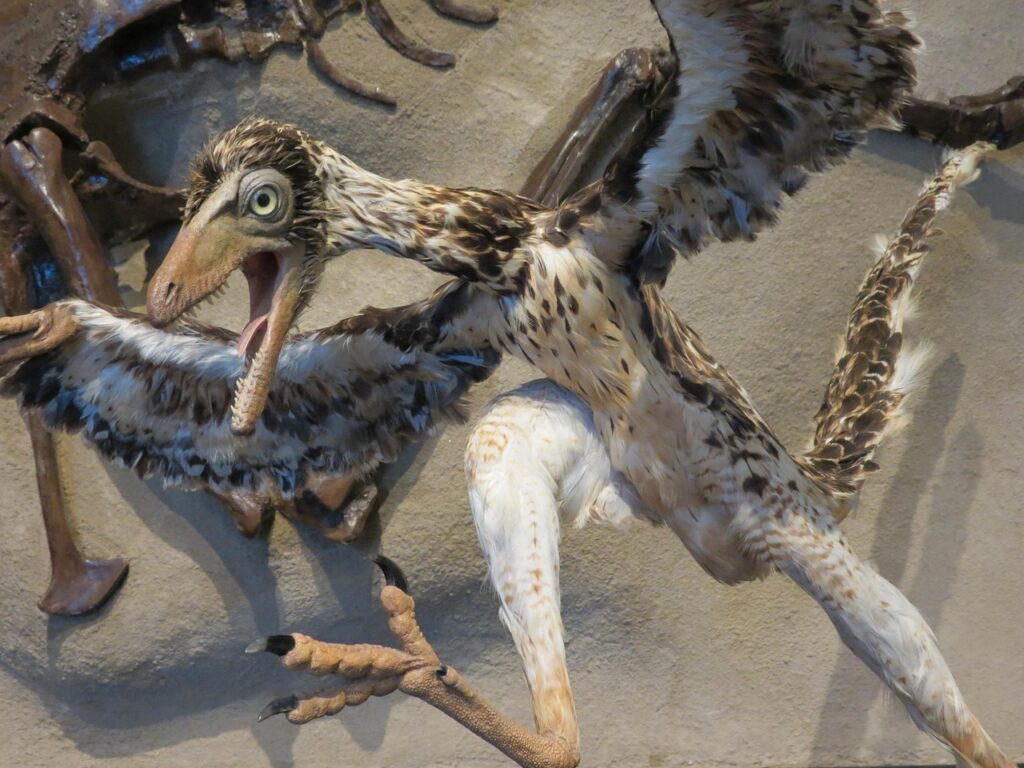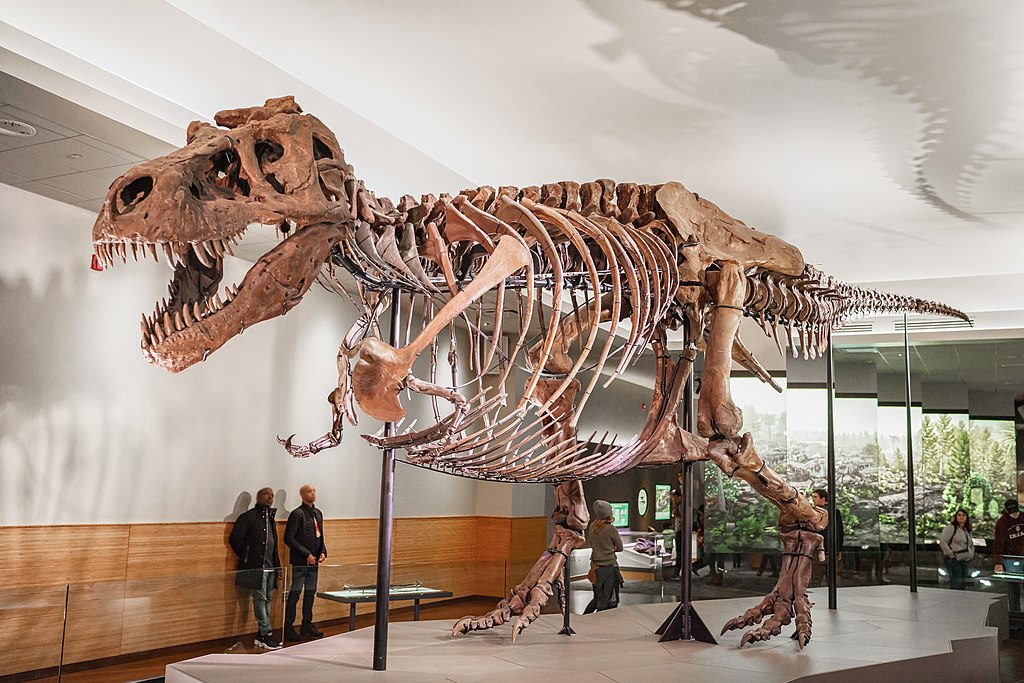When we imagine dinosaurs, we often picture them as silent giants stalking through prehistoric landscapes. But were they really so quiet? Recent scientific research suggests otherwise, and surprisingly, modern parrots—those colorful, chatty companions—are helping paleontologists decode how dinosaurs might have communicated millions of years ago. The evolutionary connections between birds and dinosaurs provide researchers with fascinating insights into prehistoric sound production, vocal learning, and communication behaviors. By studying the anatomy, behavior, and cognitive abilities of parrots, scientists are piecing together a more vibrant, vocal picture of dinosaur life than previously thought possible.
The Evolutionary Link Between Parrots and Dinosaurs

The connection between modern birds and dinosaurs represents one of paleontology’s most fascinating evolutionary stories. Birds are not just descendants of dinosaurs—they are living dinosaurs, specifically theropods, the same group that included Tyrannosaurus rex and Velociraptor. This relationship is supported by overwhelming fossil evidence showing shared features in skeletal structure, growth patterns, and even the presence of feathers. Parrots, as a highly specialized group of birds that evolved about 30 million years ago, retain ancestral features that connect them to their dinosaur forebears. Their remarkable vocal abilities, social structures, and intelligence may represent elaborations of traits that existed in certain dinosaur lineages. This direct evolutionary connection makes parrots particularly valuable as models for understanding aspects of dinosaur biology that don’t fossilize well, including communication systems and social behaviors.
Vocal Anatomy: From Syrinx to Dinosaur Sound Production

The avian vocal organ, called the syrinx, is a specialized structure located at the junction of the trachea and bronchi that allows birds, especially parrots, to produce complex vocalizations. This remarkable organ has no direct equivalent in non-avian reptiles, which raises fascinating questions about when and how it evolved. Recent fossil discoveries suggest that some non-avian dinosaurs may have possessed early versions of the syrinx or similar sound-producing structures. By studying the complex anatomy of the parrot syrinx—with its intricate musculature and controlled air flow—researchers can develop models for how dinosaur vocalizations might have worked. Computer simulations based on dinosaur skull anatomy, combined with knowledge from parrot vocal production, have enabled scientists to recreate potential dinosaur calls, ranging from low-frequency rumbles to higher-pitched calls similar to those of modern birds. These reconstructions suggest a much more vocally diverse dinosaur world than previously imagined.
Social Complexity and Communication Needs

Parrots are renowned for their highly complex social structures, which require sophisticated communication systems. They live in flocks with intricate social hierarchies, form strong pair bonds, and engage in cooperative behaviors that necessitate clear communication. This social complexity directly influences their advanced vocal abilities. Similarly, evidence from fossil beds showing multiple dinosaur species living in groups—from herding herbivores to pack-hunting predators—suggests comparable social structures that would have required effective communication. Dinosaur trackways showing coordinated movement patterns, nesting colonies, and evidence of parental care all point to social behaviors that would have benefited from vocal signals. The parallel between parrot social structures and what we know of certain dinosaur species suggests that some dinosaurs may have developed specialized vocalizations for different social contexts—warning calls, mating displays, territorial announcements, and coordination within family groups or larger herds.
Vocal Learning: A Shared Capability?

One of the most remarkable abilities of parrots is their capacity for vocal learning—the ability to hear, mimic, and modify sounds based on what they hear from others. This rare skill is found in just a few animal groups, including humans, some marine mammals, elephants, bats, and certain birds, particularly parrots and songbirds. The neural pathways that enable vocal learning in parrots have been extensively studied and show specialized brain regions devoted to this ability. While brain tissue doesn’t fossilize, skull endocasts (molds of the interior of fossil skulls) from certain dinosaur species suggest brain structures potentially compatible with some degree of vocal learning. The presence of this ability in modern birds raises the intriguing possibility that some dinosaur groups, particularly those most closely related to the ancestors of modern birds, may have possessed rudimentary vocal learning capabilities. This would have dramatically increased the complexity and flexibility of their communication systems beyond simple instinctual calls.
The Role of Intelligence in Communication Systems

Parrots rank among the most intelligent bird species, with cognitive abilities rivaling those of great apes in certain tasks. This intelligence directly relates to their communication abilities—parrots understand symbolic language, can use tools, solve complex problems, and even grasp abstract concepts. Their large brains relative to body size, particularly the expanded forebrain regions associated with higher cognitive functions, support these abilities. Dinosaur endocasts reveal surprising information about brain size and structure in certain species, with some theropods showing enlarged forebrains similar to the pattern seen in modern birds. The encephalization quotient (brain-to-body-size ratio) of some dinosaurs suggests intelligence levels that would support complex social dynamics and communication systems. This neural machinery would have provided the cognitive foundation necessary for sophisticated communication beyond simple instinctual calls, potentially including context-specific vocalizations and, in some species, advanced social signaling that required learning and memory.
Contextual Communication and Dinosaur Behavior

Wild parrots display remarkable complexity in how they use different calls in specific contexts—they have alarm calls that specify the type of predator, contact calls that identify individuals, and specialized vocalizations for different social interactions. Research has documented that some parrot species even have “names” for individual group members and can refer to absent individuals or objects. This contextual communication provides a model for understanding how dinosaurs might have used vocalizations in different situations. Fossil evidence of dinosaur behavior, such as nesting sites, trackways showing coordinated movement, and defensive postures preserved in fossils, suggests scenarios where context-specific communication would have been advantageous. For instance, hadrosaurs (duck-billed dinosaurs), with their elaborate hollow crests connected to the nasal passages, likely used these resonating chambers to produce loud, distinctive calls that may have served different functions depending on the context—from coordinating herd movements to warning of predators or attracting mates during breeding seasons.
Crests, Chambers, and Sound Production

The elaborate head crests and chambers found in many dinosaur species, particularly hadrosaurs like Parasaurolophus and Corythosaurus, have long fascinated paleontologists. These hollow structures connected to the nasal passages bear striking similarities to resonating chambers in modern animals, including some birds. Advanced CT scanning and acoustic modeling of these structures have allowed scientists to recreate the sounds these dinosaurs might have produced. The results suggest these dinosaurs could generate powerful, low-frequency sounds that would have carried over long distances in prehistoric landscapes. Comparing these structures to the resonating chambers in parrot skulls that enhance their vocalizations provides valuable insights. Though the specific mechanisms differ—parrots use their syrinx while hadrosaurs likely used air forced through nasal passages—both represent adaptations for effective sound production. These parallels suggest that elaborate vocal communication was an important aspect of dinosaur ecology, with different species evolving specialized structures for their specific communication needs.
Non-Vocal Communication: Displays and Body Language

Parrots communicate not only vocally but also through an elaborate system of visual signals including crest raising, pupil dilation, wing displays, and intricate body language. These displays complement their vocalizations and often convey emotional states or intentions that would be difficult to express through sound alone. Similarly, many dinosaurs possessed elaborate visual signaling structures such as crests, frills, horns, and feather displays that were likely used for communication. The discovery of feathered dinosaurs with iridescent plumage and evidence of dramatic display structures suggests that visual communication was highly developed in many dinosaur species. Modern parrot display behaviors provide models for interpreting these structures in dinosaur fossils. For example, the dramatic neck frills of ceratopsians like Triceratops may have served communication functions similar to how cockatoos raise their crests during social interactions—signaling excitement, aggression, or mating readiness to conspecifics.
Reconstructing Dinosaur Vocalizations

Using knowledge gained from parrot vocalizations, along with anatomical evidence from fossils, scientists have made remarkable progress in reconstructing potential dinosaur calls. This process involves multiple disciplines, including paleontology, comparative anatomy, acoustics, and ornithology. Computer models based on the skull structure, nasal passages, and potential soft tissue configurations of various dinosaur species have generated sound simulations ranging from the low-frequency rumbles of large sauropods to the trumpeting calls of hollow-crested hadrosaurs. The study of how modern parrots produce their diverse vocalizations provides crucial calibration data for these models. Some reconstructions suggest that certain dinosaur groups could produce surprisingly complex sounds, potentially including tonal variations similar to bird calls. While these reconstructions remain speculative, they are increasingly grounded in solid anatomical evidence and acoustic principles, giving us an auditory window into a world that has been silent for 66 million years.
The Importance of Parrot Conservation for Paleontology

The ongoing conservation crisis facing wild parrot populations worldwide represents not just an ecological tragedy but also a potential loss for paleontology and our understanding of dinosaur communication. Nearly a third of all parrot species are threatened with extinction due to habitat loss, the illegal pet trade, and climate change. As these species disappear, we lose living models that help scientists understand the evolution of complex communication systems. Several parrot species have already gone extinct in recent centuries, taking with them unique vocalizations and behaviors that might have provided insights into avian—and by extension, dinosaurian—communication. The study of rare parrot species with unusual communication systems, such as the critically endangered kakapo of New Zealand with its unique booming calls, provides valuable data points for understanding the diversity of communication strategies that might have existed among dinosaurs. Conservation efforts that protect parrot diversity therefore indirectly support our ability to study and understand dinosaur communication, highlighting an unexpected connection between conservation biology and paleontology.
Limitations and Challenges in Dinosaur Communication Research

Despite the valuable insights parrots provide, there are significant limitations to what we can definitively determine about dinosaur communication. The most obvious challenge is that soft tissues crucial for sound production rarely fossilize, leaving researchers to make educated inferences based on skeletal remains and comparisons with modern animals. Additionally, the 66+ million years separating the last non-avian dinosaurs from modern birds represents an enormous evolutionary gap, during which communication systems continued to evolve and specialize. The unique ecological niches and social structures of dinosaurs may have driven the evolution of communication strategies with no modern equivalent. Furthermore, the acoustic properties of Mesozoic environments differed from today’s world, with different atmospheric compositions, vegetation structures, and ambient soundscapes that would have influenced how vocalizations evolved. Scientists must acknowledge these limitations while continuing to refine their models based on the best available evidence from both the fossil record and living birds, including parrots.
Future Research Directions

The field of dinosaur communication research stands at an exciting frontier, with several promising avenues for future investigation. Advanced imaging technologies continue to improve our ability to examine fossil evidence non-destructively, revealing previously hidden details of dinosaur skull anatomy related to sound production. Comparative studies across the full diversity of modern birds, with special attention to primitive species like the cassowary and emu that may retain more ancestral features, can provide additional context for parrot-based models. Growing interest in the evolution of the avian syrinx has spurred new research into potential precursor structures in non-avian reptiles, which may help identify transitional forms in the fossil record. Sophisticated computer modeling that integrates data from multiple disciplines—including biomechanics, acoustics, and evolutionary developmental biology—offers increasingly realistic reconstructions of dinosaur vocalizations. Additionally, ongoing research into the genomics of vocal learning in parrots may eventually allow scientists to identify genetic signatures associated with communication capabilities that could potentially be searched for in preserved dinosaur DNA fragments, should technology ever advance to make this possible.
Conclusion: A More Vocal Dinosaur World

The prehistoric world was likely far from silent. Through the study of parrots and other vocal birds, paleontologists are reimagining dinosaurs as communicative, socially complex creatures that used vocalizations and visual displays as part of their daily lives. From the trumpeting calls of hollow-crested hadrosaurs to the possible chirps and warbles of small feathered theropods, dinosaur communication was likely as diverse as the species themselves. While we may never hear the actual sounds that echoed through Mesozoic forests and plains, the ongoing research connecting modern parrot vocalizations to dinosaur anatomy continues to paint an increasingly detailed sonic picture of life in the age of dinosaurs. This interdisciplinary approach demonstrates how modern animals can illuminate the biology of long-extinct species, connecting distant evolutionary dots across the vast expanse of time.




